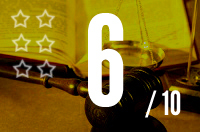Big Jay McNeely: “Deacon Rides Again”
18 Wednesday Jan 2023
Written by Sampson
IMPERIAL 5170; FEBRUARY 1952

Though with the lack of vintage footage of rock’s first generation stars on stage we can’t definitively say who the most exhilarating live act of that era was, there’s no question that Big Jay McNeely was among those in contention for that honor.
That his studio created singles at their best managed to even suggest the kind of wild furor of his extended workouts on stage was remarkable, but the appetite for that kind of record has waned in the last few years and while his live gigs are still drawing huge crowds that he whips into a frenzy, the way to ensure that passion continues is to bring in newer audiences via a fresh hit.
It’s an instrumental so maybe we shouldn’t read too much into the title, but if we do it would certainly appear that McNeely himself was well aware of what he was facing and was determined to scale that mountain one more time.
Low Ridin’
Instrumentals have always faced a few obstacles when it comes to becoming widely appreciated hits and long-term standards in the modern era… namely they have fewer ways to get their hooks in you.
That’s the key word too, albeit a different meaning… “hook”.
Vocal songs try and grab you with verbal hooks. Whether a line that invites you to sing along, words that evoke a particular emotion in you or a vocal performance that leaves you astonished at the way it is delivered, most songs that reach classic status have one or more of those traits.
That’s not ALL they have of course, not when the lyrics are backed with music, but there too we tend to remember the melodic hook or beat that works its way into our brain and gets us coming back for more.
Take away the words and the singing of those words and you’ve removed multiple ways to plant the song in an audience’s subconscious.
The classic rock instrumentals – or for that matter any pop music instrumental, like say In The Mood – has an immediately identifiable hook. Without it, even if you like a song, you may need a few seconds to remember what the title is, let alone where it’s going to go next melodically, instrumentally or rhythmically.
That’s what Deacon Rides Again seems to forget. The hook that captures our attention, that gives us the point of reference to recall the song and which compels us to seek it out again and again.
For all their purported intelligence, humans are barely one step above most mammals in that we tend to gravitate to simple repeated patterns that are easily remembered in order to forge a lasting connection to something… phone numbers, months of the year or music.
When many of those potential links are removed from the equation entirely and the most obvious remaining link is downplayed it’s almost inevitable that we’ll let the result pass us by even if what else it contains is worth our time and attention.
Or Ridin’ High
Technically speaking this is a proper song. It has structure, riffs, melody, rhythm, different instruments contributing overlapping parts in an arrangement that was clearly worked out in preparation for the session, all of which comes through on the recording.
But it works better as a performance than as a record because of how those elements are constructed.
Put Big Jay McNeely’s band on stage and have them play this and the energy will build, fueling the response of the crowd and in turn the musicians will feed off the crowd. The notes they play might be the same, but the environment will in effect become another instrument unto itself.

In that setting the riffs don’t have to be nearly as memorable. The beat doesn’t have to be as consistent. The solos will probably be more unhinged but less musical and yet the overall effect will leave little doubt that the Deacon Rides Again.
On wax however, stripped of that context, it comes across differently. It’s both unfocused in that it doesn’t give you the obvious hook to latch onto (despite the subtle recycling of The Hucklebuck at one point), nor does it work its way towards piling on the components to bring you to an obvious release, and yet at the same time it’s TOO focused, sticking closely to the arrangement rather than letting things fly haphazardly to get more of a visceral reaction.
Yet in spite of that it’s also got all of the basic things we like about rock instrumentals… it’s loud, energetic, wild enough to get your heart racing and features a top musician in the spotlight for what turns out to be a pretty good solo turn, all while supported by skilled sidemen carrying out their duties in efficient fashion.
In the moment – at a party, at a club, at a concert – the general clamor and evident excitement contained within the song will suffice. In the afterglow of that event, when the buzz wears off and the echoes are all that remain, it won’t be as easily recalled.
It’s still a good performance though and it definitely won’t be out of place on any playlist of quality rock songs from 1952. If it’s wedged between a dreamy ballad and a slinky vocal it may even stand out, adding to the variety without derailing the overall vibe.
Yet when taken alone, when listened to without any accompanying atmospheric conditions to heighten the response, its appeal is reduced to merely appreciating the musicianship while retaining little memory of the song after its over.
But that’s the fate of most instrumentals and nobody couldn’t say they didn’t know that going in… McNeely included.
SPONTANEOUS LUNACY VERDICT:

(Visit the Artist page of Big Jay McNeely for the complete archive of his records reviewed to date)
